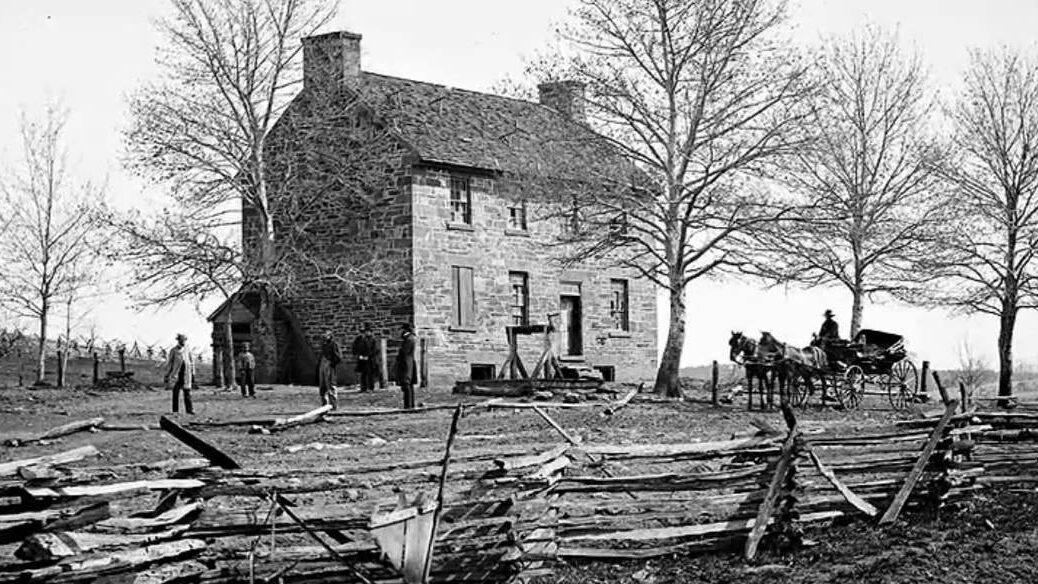The Civil War started because of uncompromising differences between the free and slave states over the power of the national government to prohibit slavery in the territories that had not yet become states. When Abraham Lincoln won the 1860 election as the first Republican President on a platform pledging to keep slavery out of the territories, South Carolina legislature passed the “Ordinance of Secession,” which declared that “the Union now subsisting between South Carolina and other states, under the name of the United States of America, is hereby dissolved.”

Within six weeks, five more Southern states – Mississippi, Florida, Alabama, Georgia, and Louisiana – had followed South Carolina’s lead and formed a new nation, the Confederate States of America. Former Union general, Jefferson Davis, was selected as it’s first President. Within a few months, five more slave states seceded and joined the Confederacy.
Predictability, the incoming Lincoln administration, and most of the Northern people refused to recognize the legitimacy of secession or the Confederate States of America. They feared it would discredit democracy and create a fatal precedent that would eventually fragment the United States into several small, squabbling countries. Both the Union and the Confederacy knew the war would be the only way to determine if the South and the North would continue as one nation.

The Event That Triggered That Civil War
The event that triggered that war came on April 12, 1861, at the Union-held Fort Sumter in South Carolina’s Charleston Bay, which was viewed by many Southerners as one of the South’s few remaining hurdles to overcome before achieving sovereignty.
U.S. Major Robert Anderson had occupied the unfinished fort in December 1860 following South Carolina’s secession from the Union, initiating a standoff with the state’s militia forces. When President Abraham Lincoln announced plans to resupply the fort, Confederate General P.G.T. Beauregard bombarded Fort Sumter on April 12, 1861. During the next 34 hours – in which many civilians watched in a celebratory spirit – 50 Confederate guns and mortars launched more than 4,000 rounds at the poorly supplied fort.

On April 13, Anderson and 86 soldiers surrendered the fort. Surprisingly no Union soldiers were killed in the battle. Two died from handling explosives following the battle, however.

Two days later, U.S. President Abraham Lincoln issued a proclamation calling for 75,000 volunteer soldiers to quell the Southern “insurrection.” The American Civil War followed.
The First Major Battle Took Near the City of Manassas
The first major battle took place on the Yorkshire Plantation, Prince William County, Virginia, near the city of Manassas, not far from the city of Washington, D.C., on July 21, 1861. It was the First Battle of Bull Run, also known as First Manassas (the name used by Confederate forces).

Union forces were slow in positioning themselves, allowing Confederate reinforcements time to arrive by rail. Each side had about 18,000 poorly trained and poorly led troops in their first battle. It was a Confederate victory as panicked Union troops withdrew under fire, frantically running without order in the direction of Washington, D.C. Both armies were sobered by the fierce fighting and many casualties and realized the war was going to be much longer and bloodier than either had anticipated.

The Northern public was shocked at the unexpected defeat of their army when an easy victory had been widely anticipated. So much so, innumerable civilians armed with picnic baskets followed the Union Army out from Washington in July 1861 to watch what everyone thought would be the climactic battle of a short rebellion.

The plantation on which the Battle of Bull Run was fought belonged to Wilmer McLean. He was a retired Major in the Virginia militia, but at 47, he was too old to return to active duty at the outbreak of the Civil War. He made his living during the war as a sugar broker supplying the Confederate States Army. He decided to move because his commercial activities were centered mostly in southern Virginia, and the Union army presence in his area of northern Virginia made his work difficult. He undoubtedly was also motivated by a desire to protect his family from a repetition of their combat experience. In the spring of 1863, he and his family moved about 120 miles south to Appomattox County, Virginia, near a dusty, crossroads community called Appomattox Court House. The war followed him there.
The Battle of Appomattox Court House Was One of the Last Battles
The Battle of Appomattox Court House fought on the morning of April 9, 1865, was one of the last battles of the American Civil War. It was the final engagement of Confederate Army general Robert E. Lee’s Army of Northern Virginia before it surrendered to the Union Army under Lt. Gen. Ulysses S. Grant. Lee, having abandoned the Confederate capital of Richmond, Virginia, after the ten-month Siege of Petersburg, retreated west, hoping to join his army with the Confederate forces in North Carolina. Union forces pursued and cut off the Confederate retreat at the village of Appomattox Court House. Lee launched an attack to break through the Union force to his front, assuming the Union force consisted entirely of cavalry.

When he realized that the cavalry was backed up by two corps of Union infantry, he had no choice but to surrender.
Lee sent a messenger to Appomattox Court House to find a place to meet. On April 8, 1865, the messenger knocked on Wilmer McLean’s door and requested the use of his home, to which McLean reluctantly agreed. Lee surrendered to Grant in McLean’s parlor, effectively ending the Civil War.
Later, McLean is supposed to boast that “The war began in my front yard and ended in my front parlor.”

0 Comments